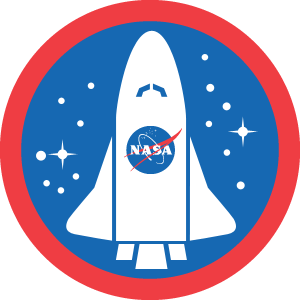
(Anton Balazh/Shutterstock)
NASA collects every kind of knowledge. A few of it comes from satellites orbiting the planet. A few of it travels from devices floating via deep house. Through the years, these efforts have constructed up a large assortment: photographs, measurements, indicators, scans. It’s a goldmine of knowledge, however attending to it, and making sense of it, isn’t all the time easy.
For a lot of scientists, the difficulty begins with the fundamentals. A file may not say when it was recorded, what device gathered it, or what the numbers imply. With out that info, even skilled researchers can get caught.
With AI programs, the challenges are much more complicated. Machines can study from patterns, however they nonetheless want some construction. If the information is obscure or lacking key labels, the mannequin can not do a lot with it or it could have to attach dots which might be simply too far aside. Which means that among the most dear information finally ends up neglected or the output isn’t dependable.
NASA has developed new instruments to deal with the issue. These embody automated metadata pipelines that course of and standardize details about the company’s huge datasets.
These automated pipelines clear up and make clear the metadata, which is the details about the information itself. As soon as that layer is stable, datasets turn into simpler to seek out, simpler to type, and extra helpful to each people and machines. The purpose is to make this improved metadata out there on acquainted platforms like Information.gov, GeoPlatform, and NASA’s personal information portals. The hope is that this shift will assist sooner analysis and higher outcomes throughout a variety of tasks.
 A part of this effort is about opening entry past NASA’s typical networks. Not everybody in search of information is conversant in inside instruments or technical programs. That problem is a part of the explanation these pipelines exist. “In NASA Earth science, we do have our personal on-line catalog, referred to as the Frequent Metadata Repository (CMR), that’s significantly geared in direction of our NASA person group,” stated Newman.
A part of this effort is about opening entry past NASA’s typical networks. Not everybody in search of information is conversant in inside instruments or technical programs. That problem is a part of the explanation these pipelines exist. “In NASA Earth science, we do have our personal on-line catalog, referred to as the Frequent Metadata Repository (CMR), that’s significantly geared in direction of our NASA person group,” stated Newman.
“CMR works nice on this case, however individuals exterior of our fast group may not have the familiarity and particular data required to get the information they want. Extra normal portals, corresponding to Information.gov, are a pure place for them to go for presidency information, so it’s necessary that we’ve got a presence there.”
NASA’s new metadata pipelines are an try to make these tales simpler to seek out and simpler to know. The primary part of the trouble is centered on greater than 10,000 public information collections, protecting over 1.8 billion particular person science data. These are being reformatted and aligned with open requirements to allow them to be shared via platforms like Information.gov and GeoPlatform, the place researchers exterior NASA usually tend to search. This shift additionally helps AI programs. When the construction is obvious and constant, fashions are higher in a position to interpret the information and apply it with out making pointless assumptions.
Bettering construction is just a part of the method. NASA can also be wanting intently on the high quality of the metadata itself. That work is dealt with via the ARC undertaking, quick for Evaluation and Evaluate of CMR. The purpose is to ensure data aren’t simply formatted correctly, but additionally correct, full, and constant. By reviewing and strengthening these data, ARC helps be certain that what exhibits up in search outcomes isn’t solely seen, but additionally dependable sufficient for use with confidence.
Translating NASA’s inside metadata into codecs that work throughout public platforms takes detailed and technical work. That effort is being led by Kaylin Bugbee, an information supervisor with NASA’s Workplace of the Chief Science Information Officer. She helps run the Science Discovery Engine, a system that helps open entry to NASA’s analysis instruments, information, and software program.
 Bugbee and her crew are constructing a course of that gathers metadata from throughout the company and maps it to the codecs utilized by platforms like Information.gov. It’s a cautious, step-by-step workflow that should match NASA’s distinctive phrases with extra common requirements. “We’re within the strategy of testing out every step of the way in which and persevering with to enhance the metadata mapping in order that it really works nicely with the portals,” Bugbee stated.
Bugbee and her crew are constructing a course of that gathers metadata from throughout the company and maps it to the codecs utilized by platforms like Information.gov. It’s a cautious, step-by-step workflow that should match NASA’s distinctive phrases with extra common requirements. “We’re within the strategy of testing out every step of the way in which and persevering with to enhance the metadata mapping in order that it really works nicely with the portals,” Bugbee stated.
NASA can also be engaged on geospatial information. A few of these datasets are utilized by different businesses for issues like mapping, transportation, and emergency planning. They’re generally known as Nationwide Geospatial Information Belongings, or NGDAs.
Bugbee’s crew is constructing a system that helps join these information to Geoplatform.gov, with hyperlinks that ship customers straight to NASA’s Earthdata Search. The method builds on metadata NASA already has, which saves time and reduces the necessity to begin from scratch. They started with MODIS and ASTER merchandise from the Terra platform and can increase from there. The purpose is to make these datasets simpler to entry, whereas protecting the construction clear and constant throughout platforms that serve each public and scientific customers.
Associated Objects
IBM’s New Geospatial AI Mannequin on Hugging Face Harnesses NASA Information for Local weather Science
Agentic AI and the Scientific Information Revolution in Life Sciences
NIH Highlights AI and Superior Computing in New Information Science Strategic Plan

